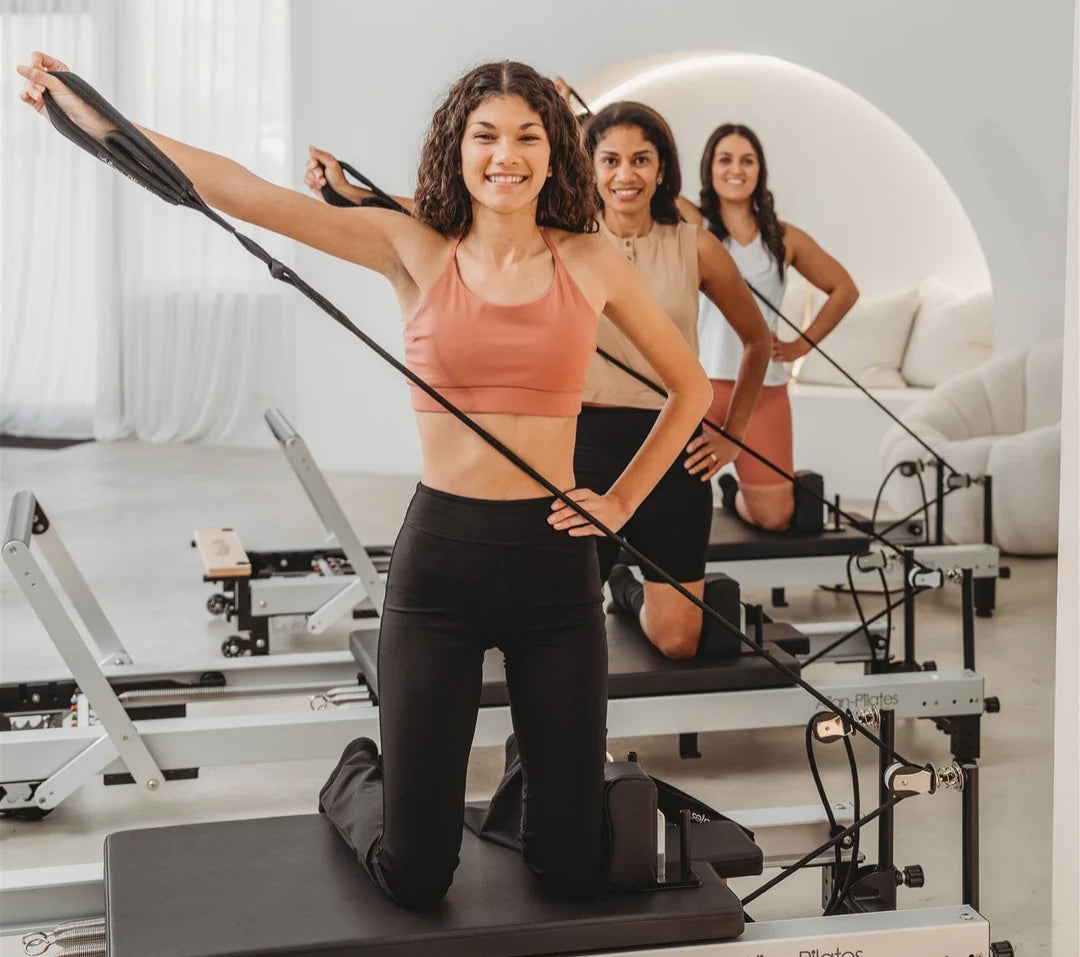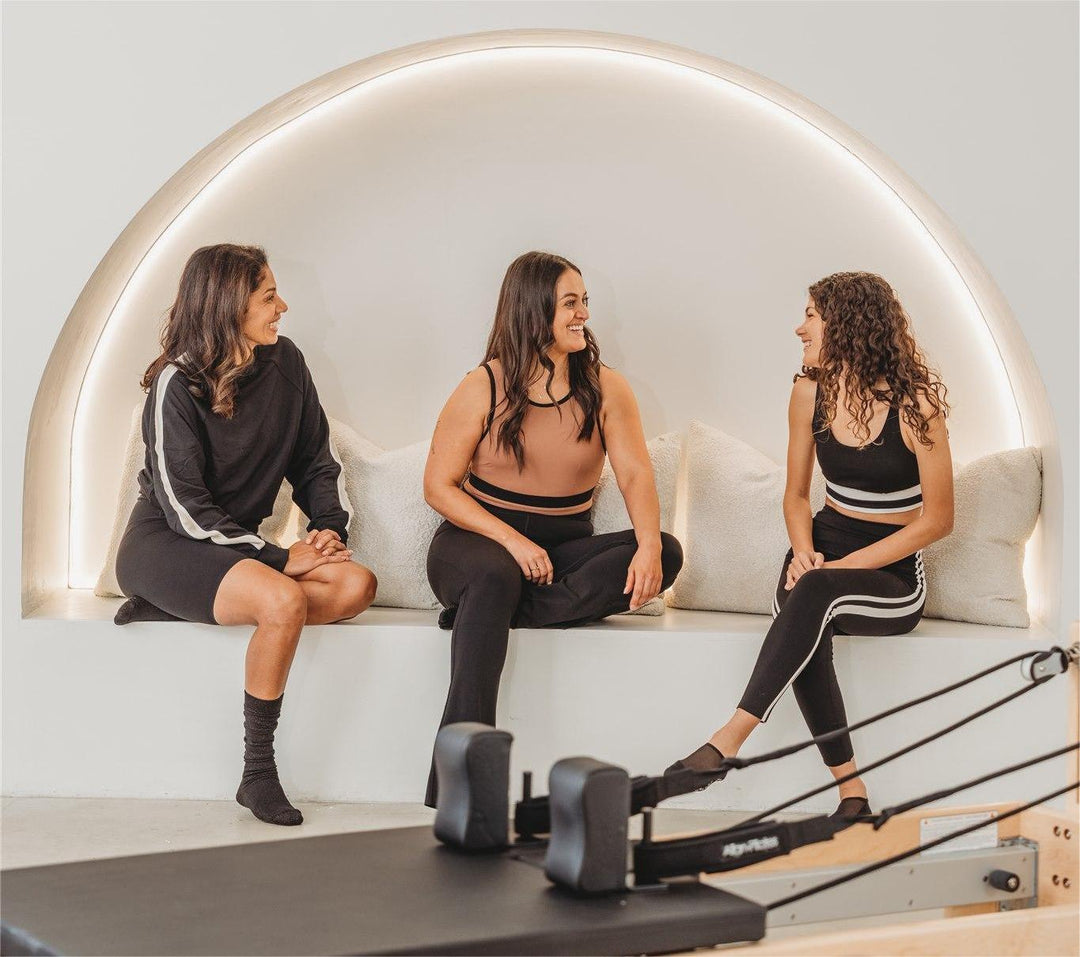Beginner's Guide To Using A Pilates Reformer Machine

More people are discovering the benefits of this Reformer Pilates, and the Reformer machine is at the heart of it. If you’re curious, cautious or even a little intimidated, don’t worry. This guide will walk you through what to expect, how the Reformer works and what you need to know to get started confidently with beginner Reformer Pilates.
What is a Pilates Reformer machine?
Before jumping into beginner Pilates reformer exercises, it helps to understand the equipment itself. The Pilates Reformer is a flat-cushioned platform — called the carriage — that slides back and forth on rails. It’s attached to a set of springs, which provide adjustable resistance, and includes a footbar, ropes and pulleys that support a wide variety of exercises.
Is Reformer Pilates hard for beginners?
While it may look like a medieval torture device at first glance, most beginners find that it’s easier to get started with Reformer Pilates than expected. The machine actually supports movements, with adjustable springs that control resistance, and a guided structure keeps everything stable and aligned.
There’s a learning curve, but nothing overwhelming. After a few sessions, the movements become more familiar, and you’ll start to feel stronger, more balanced and more in control.
Get to know your equipment: How to use a reformer Pilates machine
Here are practical tips to help you build confidence and stay safe while using a Pilates Reformer machine for the first time:
1. Familiarise yourself with the machine’s components
Before you try Reformer Pilates for beginners, take a few minutes to explore the machine. The carriage is the padded platform you lie, sit or kneel on. It slides back and forth on rails and is connected to springs that create resistance. At one end, you’ll find the footbar, which you’ll use for exercises like footwork or bridging. The ropes, straps, pulleys and shoulder rests all work together to guide and support a wide range of controlled movements.
2. Learn how to adjust the springs safely
Springs are the foundation of resistance on the Reformer. Often, there are multiple coloured springs that indicate different levels of tension. The more springs you add, the more resistance you’ll work against, which is helpful for exercises like leg presses. Fewer springs reduce resistance but increase the challenge for stability and control, especially in core-focused exercises.
Take time to practise how to hook and unhook the springs properly, always doing so while the carriage is still. Learning how to adjust the resistance for your body and the movement you're doing will help you build strength safely and progress with confidence.
3. Use the shoulder rests to anchor your body
When lying on your back for beginner Pilates Reformer exercises like footwork or bridging, your shoulders should sit comfortably against the shoulder rests. These provide stability, prevent you from sliding and help maintain alignment on the moving carriage.
If you feel like you're shifting or straining your neck during movements, double-check your position against the shoulder blocks and ensure the headrest is set correctly for your posture.
4. Adjust the footbar to suit your height and exercise
The footbar can be repositioned to suit your height and the specific movement being performed. If it's too far or too close, it can throw off your alignment and reduce the effectiveness of the exercise.
For footwork or bridging, the footbar should be positioned, so your knees are bent at about a 90-degree angle when your feet are on it. For arm work or when not in use, the footbar may need to be lowered or moved out of the way.
5. Control the straps and ropes during movement
In beginner Reformer Pilates classes, the straps are commonly used in arm and leg exercises like leg circles or lying arm presses. Try to maintain steady tension throughout the movement to keep the carriage stable and your form controlled. Letting the straps go slack or snap back can jolt the machine and disrupt your flow.
Most Reformers also allow you to adjust rope length based on your height or the exercise. Just check that both sides are evenly balanced throughout your session.
6. Mount and dismount the machine carefully
Because the Reformer includes a moving carriage, stepping on and off requires a bit of care. Always step onto the stable frame or platform first, using the footbar or shoulder rests for support. Once you’re balanced, you can move onto the carriage. When finishing your session, wait until the carriage comes to a complete stop before getting off.
7. Watch the headrest and neck alignment
An adjustable headrest is a small but important feature on Reformers as you're learning how to use the machine safely and comfortably. For those doing Reformer Pilates for beginners, correct neck and head alignment helps reduce strain during exercises like footwork and arm presses.
If your chin is tilting too far up or down, adjust the headrest to find a more neutral position. Some people prefer it flat, while others benefit from a slight lift. Go with what feels most supportive and natural for your body.
Beginner Pilates Reformer exercises to get you started
If you’re new to using a reformer, there’s no need to jump into complex routines. A few foundational exercises can help you build confidence and control while getting familiar with the machine.
Some of the most common beginner Pilates reformer exercises include:
- Footwork on the footbar
- Bridging
- Leg circles in straps
- Arm presses with straps
- Seated torso twists or rows
Each of these movements is slow, controlled, and easy to scale as you improve. Most beginner sessions will focus on these basics to help you feel steady and connected to your core from the very first workout.
Find the right Reformer with Pilates Reformers Australia
Getting started with beginner Reformer Pilates is easier when you’ve got the right equipment. At Pilates Reformers Australia, we offer a collection spanning home models, commercial-grade Reformers for studio and gym use and essential accessories to complete your practice.
If you’re not sure which machine suits your space or experience level, send us a message. Our team can walk you through the options and make sure you get a setup that fits your goals.





